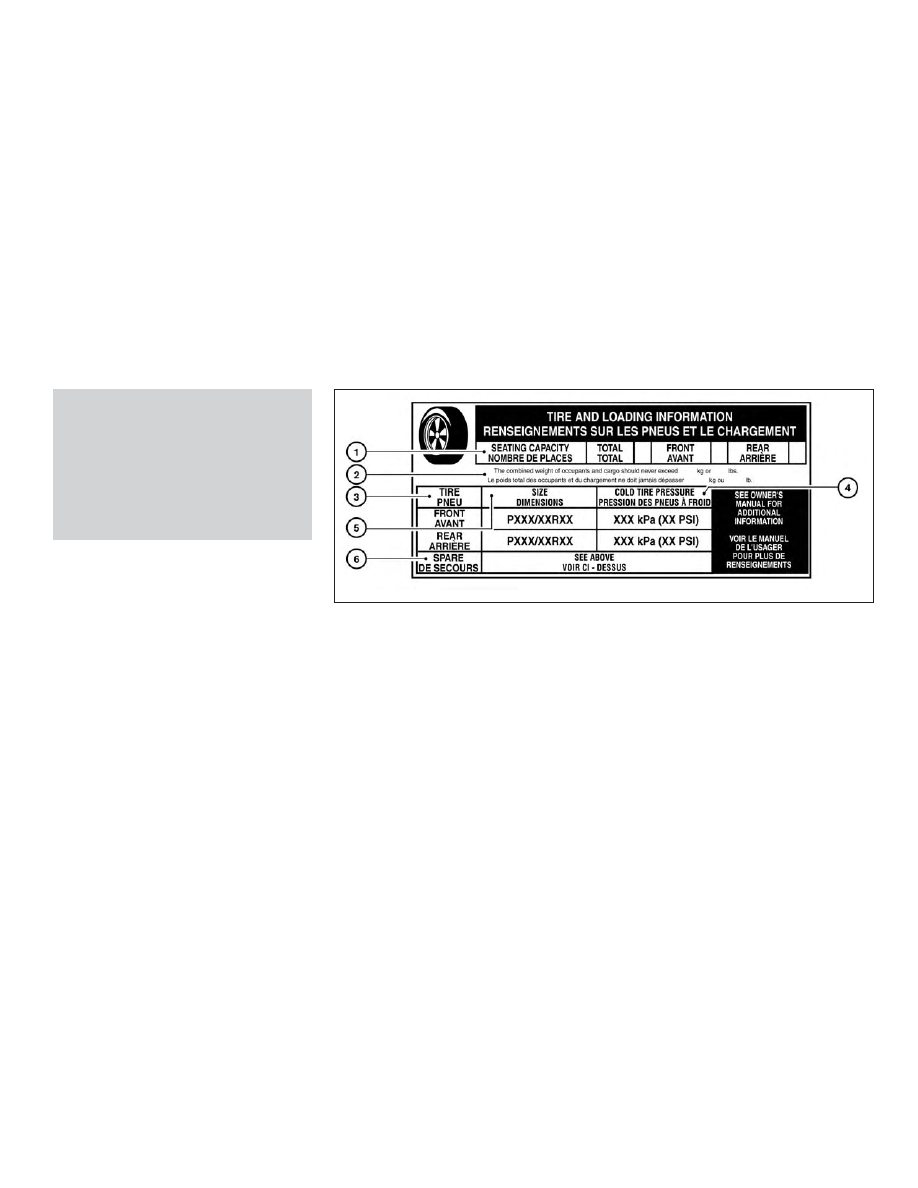Nissan NV200 Taxi (2017 year). Manual - part 18

● Before taking a long trip, or
whenever you heavily load your
vehicle, use a tire pressure gauge
to ensure that the tire pressures
are at the specified level.
● For additional information re-
garding tires, refer to “Important
Tire Safety Information” in the
Warranty Information Booklet.
Tire and Loading Information label
䊊
1
Seating capacity: The maximum num-
ber of occupants that can be seated
in the vehicle.
䊊
2
Vehicle load limit: For additional infor-
mation, refer to “Vehicle loading infor-
mation” in the “Technical and con-
sumer information” section of this
manual.
䊊
3
Original tire size: The size of the tires
originally installed on the vehicle at
the factory.
䊊
4
Cold tire pressure: Inflate the tires to
this pressure when the tires are cold.
Tires are considered COLD after the
vehicle has been parked for 3 or more
hours, or driven less than 1 mile
(1.6 km) at moderate speeds. The
recommended cold tire inflation is set
by the manufacturer to provide the
best balance of tire wear, vehicle
handling, driveability, tire noise, etc.,
up to the vehicle’s GVWR.
䊊
5
Tire size - refer to “Tire labeling” in
this section.
LDI2495
Do-it-yourself
8-31